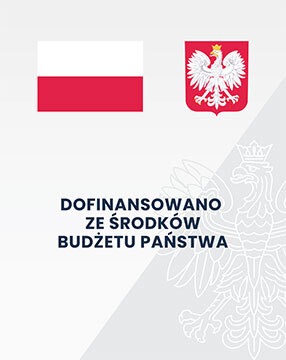Cyberbezpieczeństwo i Internet Rzeczy
Christopher Biedermann
Afiliacja: Emitel sp. z o.o., Poland Department of Information Systems Warsaw University of Technology, Stany Zjednoczone
Abstrakt
CEL/TEZA: Celem artykułu jest wykorzystanie przykładów niedawnych cyberataków do przedstawienia obecnego stanu przygotowania technologii Internetu Rzeczy (IoT) wobec zagrożeń bezpieczeństwa oraz podkreślenia fundamentalnych, zdaniem autora, zmian, które muszą nastąpić w przemyśle i technologiach IoT, aby zminimalizować ogólne ryzyko związane z cyberbezpieczeństwem.
KONCEPCJA/METODY BADAŃ: Problem przedstawiono w artykule na podstawie analizy i interpretacji wyników badań dotyczących cyberbezpieczeństwa, opublikowanych w licznych studiach i sprawozdaniach.
WYNIKI I WNIOSKI: Wnioskami z tej analizy są następujące kluczowe kwestie: (1) w świecie, w którym urządzenia są coraz silniej z sobą powiązane poprzez łącza internetowe (urządzenia IoT, Internetu Rzeczy) powstały nowe formy zagrożenia bezpieczeństwa; (2) obecnie urządzenia te są w dużym stopniu podatne na ataki; (3) istnieją dziś technologie, które można zastosować, aby złagodzić wiele spośród tych zagrożeń; (4) jednakże, ze względu na rozdrobniony i heterogeniczny charakter urządzeń IoT, zapewnienie nawet podstawowego poziomu bezpieczeństwa jest znacznie większym wyzwaniem niż w przypadku tradycyjnych urządzeń podłączonych do Internetu (np. komputerów osobistych); (5) przemysł musi skierować uwagę na trzy podstawowe zagadnienia, które pomogą zmniejszyć te szczególne zagrożenia bezpieczeństwa stwarzane przez urządzenia IoT, tj.: wykorzystanie otwartych standardów, współpraca i konsolidacja przemysłu, poprawa świadomości konsumentów.
ORYGINALNOŚĆ/WARTOŚĆ POZNAWCZA: Artykuł służy naświetleniu problemów bezpieczeństwa związanych z Internetem Rzeczy oraz zaproponowaniu pewnych rozwiązań, które należy wprowadzić, aby zwiększyć poziom świadomości bezpieczeństwa w środowisku IoT.
Słowa kluczowe
Cyberbezpieczeństwo; Atak DoS; Atak Denial of Service; Internet Rzeczy; Bezpieczeństwo Internetu
Bibliografia
AT&T (2016). The CEO’s Guide to Navigating the Threat Landscape [online]. AT&T Cybersecurity In-sights, 4 [22.11.2016], https://www.business.att.com/cybersecurity/docs/vol4-threatlandscape.pdf
Columbus, L. (2016). Roundup Of Internet Of Things Forecasts And Market Estimates [online]. Forbes, 27 November [27.11.2016], http://www.forbes.com/sites/louiscolumbus/2016/11/27/roundup-of-internet-of-things-forecasts-and-market-estimates-2016/#7b0d01844ba5
Denial of Service Attack (2016). In: Wikipedia, The Free Encyclopedia [online] [10.11.2016], https://en.wikipedia.org/wiki/Denial-of-service_attack
Desai, D. (2016). IoT Devices in the Enterprise [online]. Zscaler Corporate Reaserach Blog, 15 No-vember [20.11.2016],
https://www.zscaler.com/blogs/research/iot-devices-enterprise
Ericsson (2016). Internet of Things to Overtake Mobile Phones by 2018: Ericsson Mobility Report [online]. 2016–06-01 press release [11.11.2016], https://www.ericsson.com/news/2016987
Grau, A. (2016). IoT Security Standards – Paving the Way For Customer Confidence [online], IEEE Standards University, 29 February [10.11.2016], http://www.standardsuniversity.org/e-magazine/march-2016/iot-security-standards-paving-the-way-for-customer-confidence/
Hamblen, M. (2016). DDoS Attack Shows Dangers of IOT Running Rampant [online], Computerworld, 25 October [10.11.2016], http://www.computerworld.com/article/3135285/security/ddos-attack-shows-dangers-of-iot-running-rampant.html
IETF (2016). Internet Engineering Task Force, Workshop on Internet of Things (IoT) Software Update (IOTSU) [online], 8 October [10.11.2016], https://tools.ietf.org/html/draft-farrell-iotsu-workshop-01
Inayat, A.; Sabir, S.; Ullah, Z. (2016). Internet of Things Security, Device Authentication and Access Control: A Review. International Journal of Computer Science and Information Security, 14(8), August, 456–466.
Internet Architecture Board (2016). Internet of Things Software Update Workshop (IoTSU) [online] [25.11.2016], https://www.iab.org/activities/workshops/iotsu/
Internet Society (2015). Botnets [online], Internet Society Policy Briefing , October 30 [15.11.2016], http://www.internetsociety.org/policybriefs/botnets
Kolkman, O. (2016). Trust Isn’t Easy: Drawing an Agenda from Friday’s DDoS Attack and the In-ternet of Things [online], Internet Society Tech Notes, 24 October [12.11.2016], https://www.internetsociety.org/blog/tech-matters/2016/10/trust-isnt-easy-drawing-agenda-fridays-ddos-attack-and-internet-things
Lunden. I (2016), Oracle Acquires DNS Provider Dyn, Subject of a Massive DDoS attack in October, [online], Techcrunch , 21 November [21.11.2016], https://techcrunch.com/2016/11/21/oracle-ac-quires-dns-provider-dyn-subject-of-a-massive-ddos-attack-in-october/
NTIA (2016). US Department of Commerce, Multistakeholder Process; Internet of Things (IoT) Security Upgradability and Patching [online], 24 October [5.11.2016], https://www.ntia.doc.gov/other-publication/2016/multistakeholder-process-iot-security
Rezendes, C.; Stephenson, W.D. (2013). Cyber Security in the Internet of Things [online], Harvard Business Review, 21 June [26.11.2016], https://hbr.org/2013/06/cyber-security-in-the-internet
Ronen, E.; O’Flynn, C.; Shamir, A.; Weingarten, A.-O. (n.d.). IoT Goes Nuclear: Creating a Zig-Bee Chain Reaction [online], Weizmann Institute of Science [21.11.2016], https://eprint.iacr.org/2016/1047.pdf
Seals, T. (2016). Survey – Less Than 10% of IoT Devices Keep Data Secure [online], IoT Security Foundation, June [16.11.2016], https://iotsecurityfoundation.org/survey-less-than-10-of-iot-devices-keep-data-secure/
Schakowsky; P. (2016). Pallone & Schakowsky Urge FTC to Strengthen Security of IoT Devices Following Recent Cyberattack [online], 3 November [28.11.2016], https://schakowsky.house.gov/common/popup/popup.cfm?action=item.print&itemID=3356
Schneier, B. (2014). The Internet of Things Is Wildly Insecure And Often Unpatchable [online], Wired, 6 January [20.11.2016], https://www.schneier.com/essays/archives/2014/01/the_internet_of_thin.html
Sheridan, K. (2016). New Free Mirai Scanner Tools Spot Infected, Vulnerable IoT Devices [online], Dark Reading, 11 August [16.11.2016], http://www.darkreading.com/perimeter/new-free-mirai-scanner-tools-spot-infected-vulnerable-iot-devices-/d/d-id/1327436
Zeifman, I.; Bekerman, D.; Herzberg, B. (2016). Breaking Down Mirai: An IoT DDoS Botnet Analysis [online], Imperva Incapsula, 26 October [23.11.2016], https://www.incapsula.com/blog/malware-analysis-mirai-ddos-botnet.html
Afiliacja: Emitel sp. z o.o., Poland Department of Information Systems Warsaw University of Technology, Stany Zjednoczone
Biogram:
CHRISTOPHER BIEDERMANN is currently a PhD student at the Warsaw University of Technology, Department of Information Systems. Prior to entering into the PhD program he has worked in a number of companies in the technology sector and is currently a management board member at Emitel in Poland. In addition he has received a MBA from the University of Texas-Austin in 1994 and a B.S. from Lehigh University in 1989. His present studies are focused on researching solutions how to develop standardized communication protocols and machine learning principles for the Internet of Things.
Contact to the Author:
cfbieder@hotmail.com
Emitel Sp. z o.o.
ul. Wołowska 22
02–675 Warszawa
CC BY-NC-ND 4.0 Uznanie autorstwa - Użycie niekomercyjne - Bez utworów zależnych 4.0 Międzynarodowe





